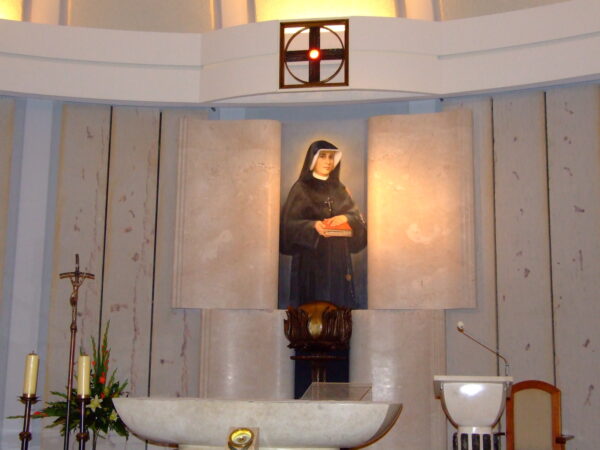This is the latest installment of the series, “The genius of my sister.” Read other articles in the series to learn more about Catholic women throughout history and how they can inspire us today.
“Nothing great is ever achieved without much enduring” (St. Catherine of Siena).
Imagine the scandal that would arise if Pope Francis decided, on a whim, to move the papacy from Rome to another country (say, France) and begin to indulge in a life of luxury and avarice. Then suppose that the next six popes followed suit. The Church would be angry, divided, a source of mockery. But, believe it or not, this very scenario did happen many centuries ago in Avignon, France.
The Avignon Papacy, which lasted from 1309-76, resulted in seven consecutive French popes residing in Avignon, France. It was an unprecedented time, one marked by great political tension, scandal, greed and discord. Popes were failing to uphold their duties, seemingly forgetting the example of Christ-like servant leadership that they were called to model. And though the French influence on the Church was less than it appeared to be, to onlookers who were enduring the 100 Years War, it certainly seemed as though the Church had chosen a side; as though the Catholic Church, which was called to be universal, had become French.
This was the world in which St. Catherine of Siena was born. Though she lived a relatively short life (dying at age 33 in April of 1380), Catherine was a model of holiness for those who encountered her. In fact, she proved to be the catalyst in the papacy’s return to Rome. It is this aspect of her life that I am most captivated by and the aspect for which she is most remembered. Broken by the discord in the Church, St. Catherine begged Pope Gregory XI to return the papacy. In a letter to him she wrote: “Come, come, and resist no more the will of God that calls you. … For you, as the Vicar of Christ, should abide in your own place. Come, then, come, and delay no more.” Eventually, Pope Gregory XI heeded her challenging admonitions.
Two important lessons from the life of St. Catherine
The goodness of unity: Our culture today is filled with polarization. There is a tendency to only follow and listen to those who think, look and feel the same as us. Social media makes this especially easy as we can block those who challenge us. But to do that is, in a sense, to escape from Rome to France. St. Catherine recognized the importance of our call to be one, holy, catholic (meaning universal) Church. Interestingly, the oneness of the Church does not mean everything is the same but, rather, that we are the Body of Christ, gathered together, functioning without division. In the words of St. Paul: “Now the body is not a single part, but many. … If the whole body were an eye, where would the hearing be? … But as it is, God placed the parts, each one of them, in the body as he intended. If they were all one part, where would the body be? But as it is, there are many parts, yet one body” (1 Cor 12:14-20). May we, like St. Catherine of Siena, be an answer to Jesus’ prayer “that they may be one.”
Answer the call: Even in the most troubling of times, God’s grace is sufficient: “where sin increased, grace overflowed all the more” (Rom 5:20). Indeed, he continues to raise up saints. St. Catherine of Siena did not leave the Church out of the discouragement and scandal caused by the sins of its members. Instead, she continued to love the Church as instituted by Christ and worked for its increased perfection here on earth. She was even so bold as to bluntly challenge the pope: “Up, then, father, and no more negligence!” We must choose heaven first; we must choose to remain within the Church even when its members fail us (and be assured, sometimes we are the member who is failing). But rather than turning from the sacramental life of the Church, may we continue to love it. This is the work of saints. This is the work to which we are called.




